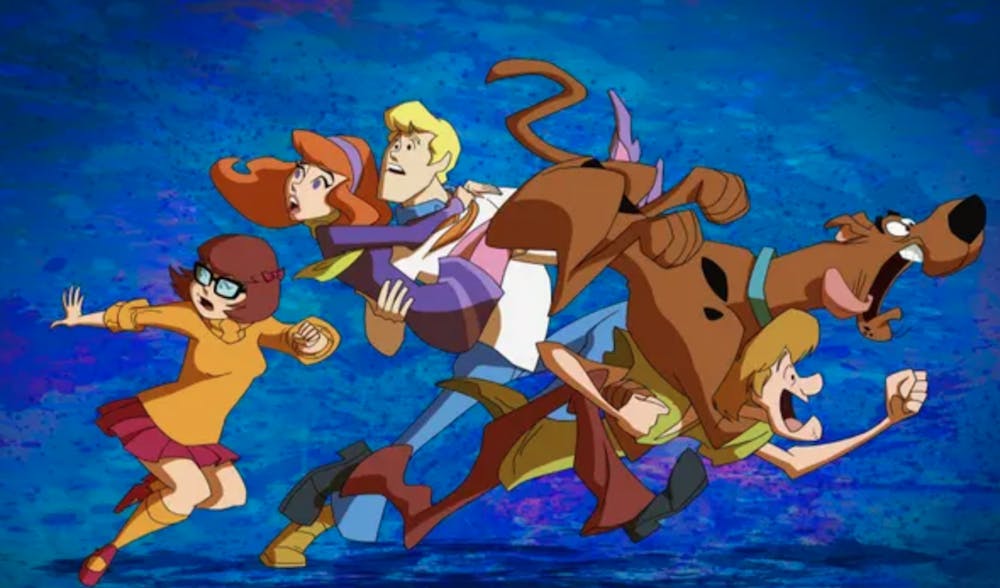Scooby–Doo holds a strong spot in my heart as my lifelong favorite cartoon character. Hanna–Barbera’s iconic Great Dane has been around since 1969 when the animated series, Scooby Doo, Where Are You! started airing on Saturday morning television. Since the inception of the crime–solving Great Dane and his iconic human companions, there have been numerous adaptations of Scooby–Doo on a variety of mediums. While some adaptations are more interesting than others (including the most recent atrocious adaptation, SCOOB!), they all find a way to put their own unique twist on the classic crime–solvers of Mystery Incorporated.
Of its 15 incarnations, ranging from live–action films to animated television series, one reimagining of Scooby Doo stands out among others: The 2002 animated series, What’s New, Scooby Doo?. The ninth iteration of Scooby–Doo and his mystery–solving companions, this series takes everything great about the original cartoon and elevates it for a modern audience. Through a fresh animation style, robust character personalities, and memorable mysteries, What’s New, Scooby Doo? cements itself as an all–time great chapter in the timeless book of Scooby–Doo.
Airing for three seasons, What’s New takes the original series and reimagines it for the world of modern television. Warner Bros ditched the old–fashioned laugh track from the original series, creating a less meta environment for the modern animation. While What’s New is the ninth version of Scooby–Doo, it feels like the first to take such a modern reimagining from the earlier adaptations such as A Pup Named Scooby Doo or The Scooby Doo Movies. These earlier adaptations were likely less inventive due to Hanna–Barbera working with a smaller budget. But by 2002, Scooby–Doo was a household name, which incentivized Warner Bros to fund it.
What’s New utilizes modern editing techniques within the animated production. Natural wipes, dissolves, and other clever editing tricks give the series the resemblance of a cinematic production. The color is also much more vibrant in What’s New. Each episode has electrifying colors to contrast the classic palette of the Mystery Machine and its crew. Additionally, the What’s New series has a more modern feel through its kickass soundtracks. I still get nostalgic every time I hear the "Simple Plan" theme song.
In What's New, each voice actor is given the freedom to create a distinct personality for their character. This is in contrast to Scooby Doo, Where Are You!, where all members of Mystery Inc. had little to no personality, and Shaggy and Scooby–Doo were the only characters with a hint of individuality. The distinct personalities formed in What's New, Scooby Doo? have carried over to each subsequent Scooby–Doo adaptation.
Frank Welker shines especially in What’s New. Serving as the voice of Fred Jones since 1969, Welker gave Fred his charismatic personality as Mystery Inc.’s fearless leader in this series. What’s New is also where Welker started voicing Scooby–Doo. He has voiced the two characters ever since, except for in SCOOB!, where Fred was voiced by Zac Efron, a befuddling choice. Overall, the characters in What’s New have become the most recognizable versions to date, with the creators preserving most of their original designs while reforming their characters' personalities for modern storytelling.
What everyone loves about a Scooby–Doo show is its mysteries. What’s New approaches the multidimensionality of mystery narratives, but doesn't overcomplicate itself. While still entertaining, the older series like Scooby Doo, Where Are You! followed a very basic formula: Mystery Inc. would be in some dark and stormy setting, meet at most two extra characters, one of which would be the culprit at the end of the episode. What’s New completely revolutionized this. Each episode began in a very unique setting, with lively supporting characters and detailed animations to match each story.
Additionally, viewers could be more immersed into each episode, with five or six solid options for the culprit by the time of unmasking. This new approach allowed for fans to get the stories they loved from the original series in a fresh and creative way. The creativity was also amped up with the monsters in What’s New. Each monster had a distinct design, as well as a specific chase scene. The chase sequences in earlier adaptations were very linear, usually focusing on the Shaggy and Scooby running across rooms. In What’s New, each chase scene utilizes the environment much more, and has a kickass soundtrack accompanying it.
This series sparked my affinity for mystery fiction, and I’ve been a lifelong consumer of Scooby–Doo in his various forms on the screen. What's New, Scooby Doo? will always remain the best incarnation, and it’s going to be hard for Warner Bros. to pull off another modern adaptation that still feels like a classic. If you need some quick binges to get you through a quarantined midterm season, check out some episodes of What’s New, Scooby Doo? on Netflix.







